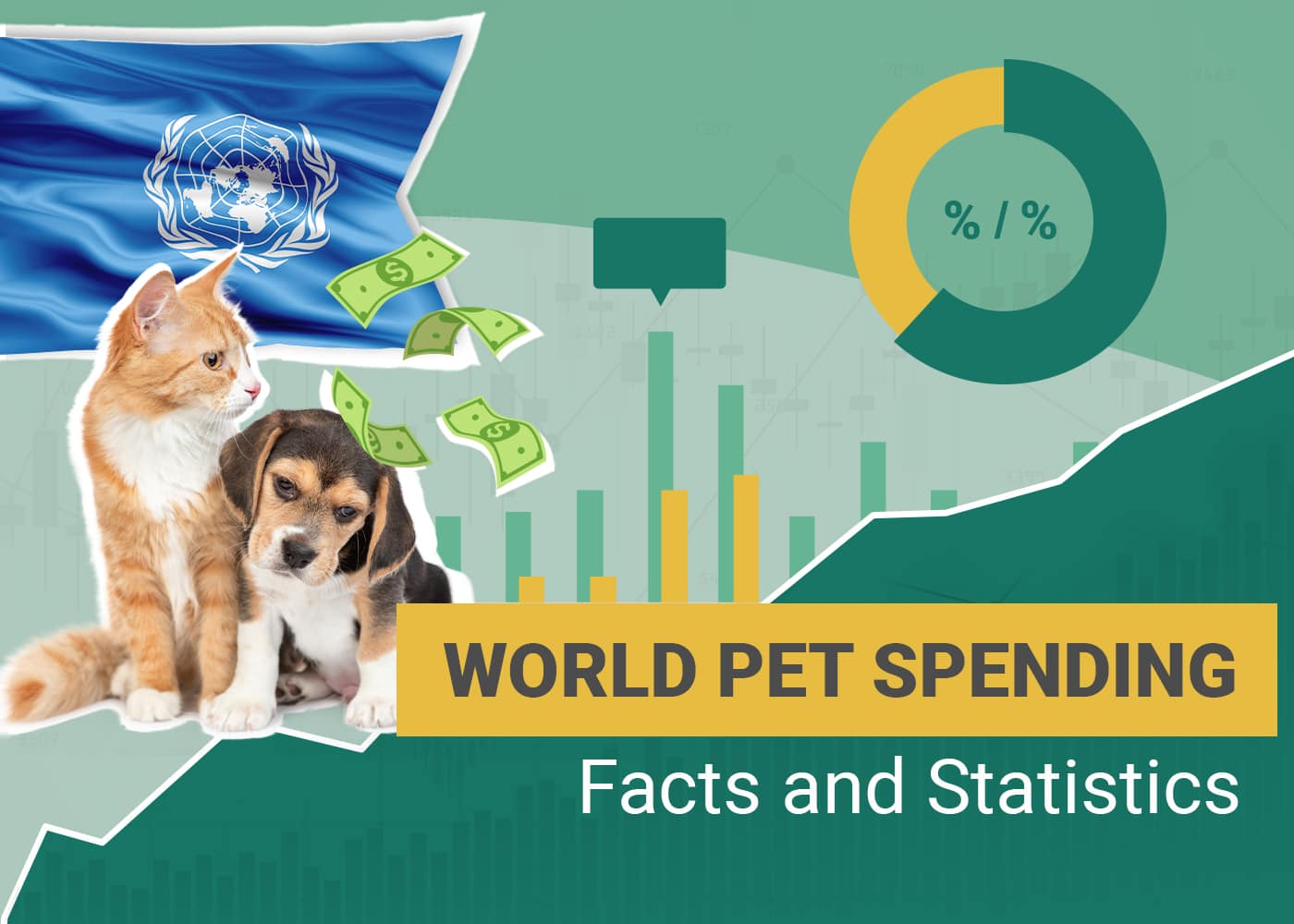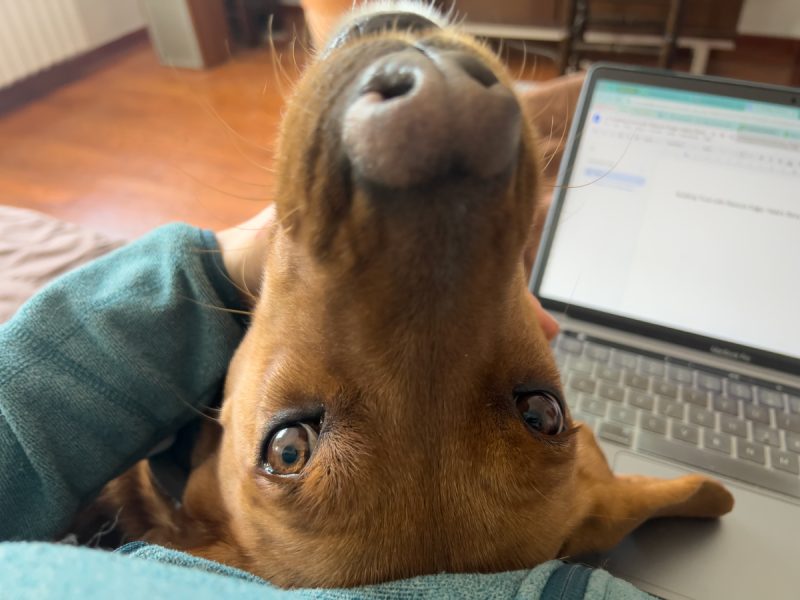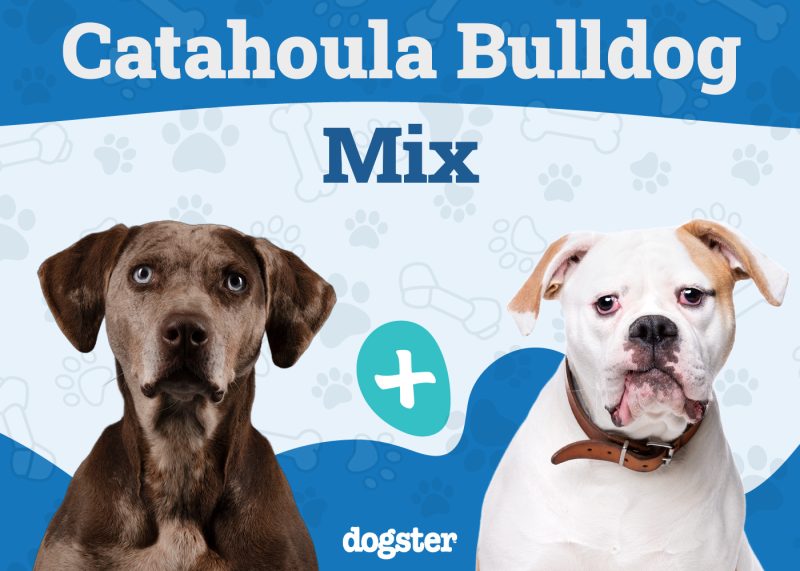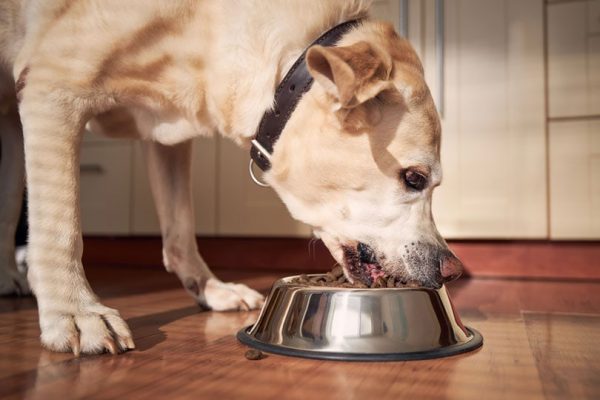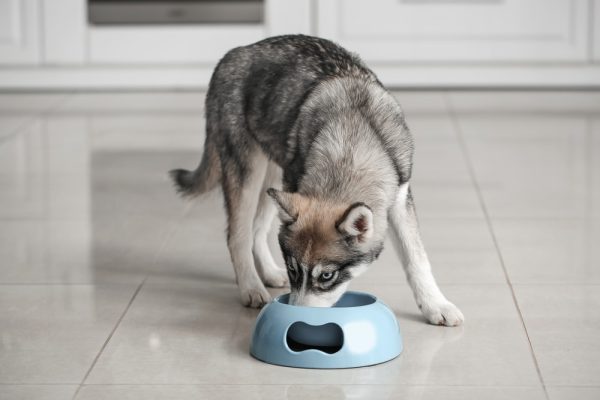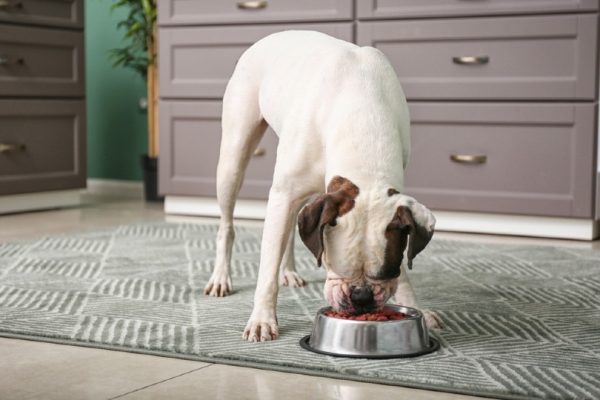In this article
Note: This article’s statistics come from third-party sources and do not represent the opinions of this website.
According to a Synchrony study, the average total lifetime cost of owning a dog is between $19,893 and $55,132, assuming they have a 15-year lifespan. That’s a lot of money when you do the math, with it costing about $1,270 to $2,803 a year. You may wonder where all that cash goes.
Pet owners don’t seem to have any problems pampering their animal companions. Americans dished out roughly $143.5 billion in 2023 on their pets, but there is even more to learn. So, let’s delve deeper into what caregivers are spending on their pets lately.

The 20 Pet Spending Statistics
- Health-related expenses accounted for 19% to 45.5% of total dog-related costs.
- Health-related expenses accounted for 15% to 38.8% of total cat-related costs.
- Annual pet food costs average $434 to $684 for dogs and $351 to $584 for cats.
- The average cost for a vet exam is anywhere from $50 to $250.
- Forecasters expect the United States cat litter market to increase to $1.42 billion annually by 2025.
- The average monthly premium for pet insurance for a cat is $19.
- The two most affordable dog breeds to insure are the German Shepherd Dog and Beagle, averaging a monthly cost of $34 for accident and illness coverage.
- Americans spent $28.8 billion at brick-and-mortar pet stores.
- March 2024 pet food expenses averaged 23% higher than 2021 figures and almost 25% more than 2019.
- An unexpected pet health expense of $250 or less causes about 25% of owners to experience anxiety.
- The average cost for an emergency vet exam is between $100 to $200.
- Veterinary costs have surged 39% higher in March 2024 compared to numbers from March 2019.
- The most expensive state for a routine vet exam is Connecticut, with the cost averaging $93.
- Winston-Salem, NC is the most expensive place to own a dog, with average annual costs for doggie daycare running $2,784.
- Pet owners spent an estimated $122 on their animal companions during the 2023 holiday season.
- About 74% planned to buy toys for their pets during the holidays.
- Generation Z spent the greatest percentage of their holiday gift budget on pets, at about 35%.
- Baby Boomers spend the greatest percentage of their income on pets, averaging 0.96%.
- Midwest pet owners spent the most on their pets in 2022, averaging $820 annually.
- Americans spent roughly $58.1 billion on pet food and treats in 2022.

Basic Pet Spending Statistics
(Synchrony)
Many variables, such as the animal’s health, genetics, and home environment, will influence this percentage. It often includes things like medications, parasite control, annual checkups, dental care, vaccinations, and more.
(Synchrony)
We can reiterate the same information from above about cats. Interestingly, the cost gap between dogs and cats has narrowed in recent years. We’ll likely see this figure stabilize as more pet owners choose to keep their kitties indoors, resulting in a longer lifespan.
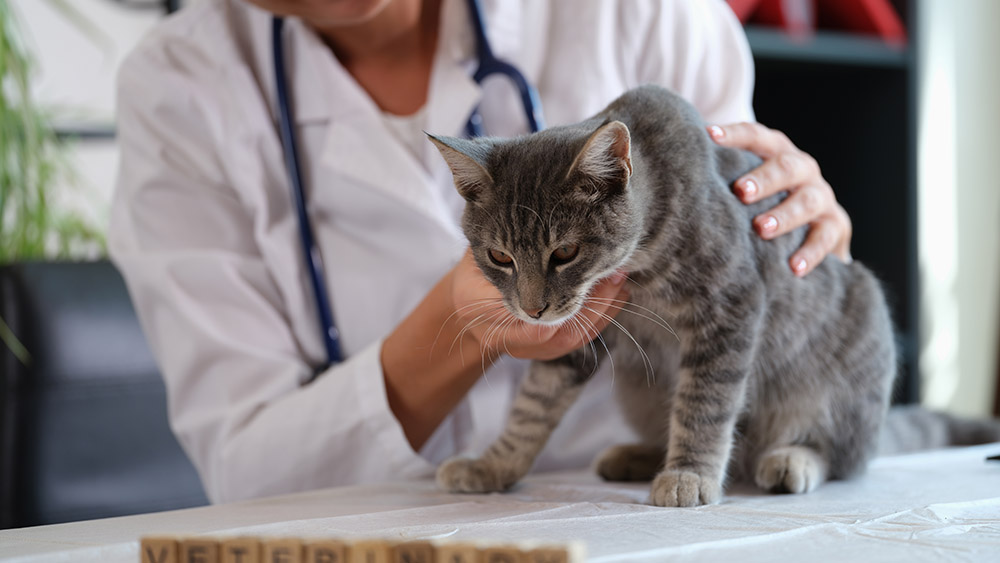
3. Annual pet food costs average $434 to $684 for dogs and $351 to $584 for cats.
(Synchrony)
While these figures may sound high, pet food is vital for the animal’s health and well-being. You can often save money by feeding your pet dry food. It’s more convenient as long as you monitor your animal companion’s intake to prevent obesity. However, we recommend discussing diet with your vet to choose the best option for the individual animal.
If you need to speak with a vet but can't get to one, head over to PangoVet. It's an online service where you can talk to a vet online and get the personalized advice you need for your pet — all at an affordable price!
4. The average cost for a vet exam is anywhere from $50 to $250.
(Care Credit)
Annual vet exams are kind of another form of pet insurance in that it’s an opportunity to update your animal companion’s vaccinations and run the necessary tests to keep your pet healthy. While the cost may sound high, consider what you’re getting in return. It’s a much better option than relying on Google for advice, and you are likely going to have more years with your fur baby if you catch any problems early.
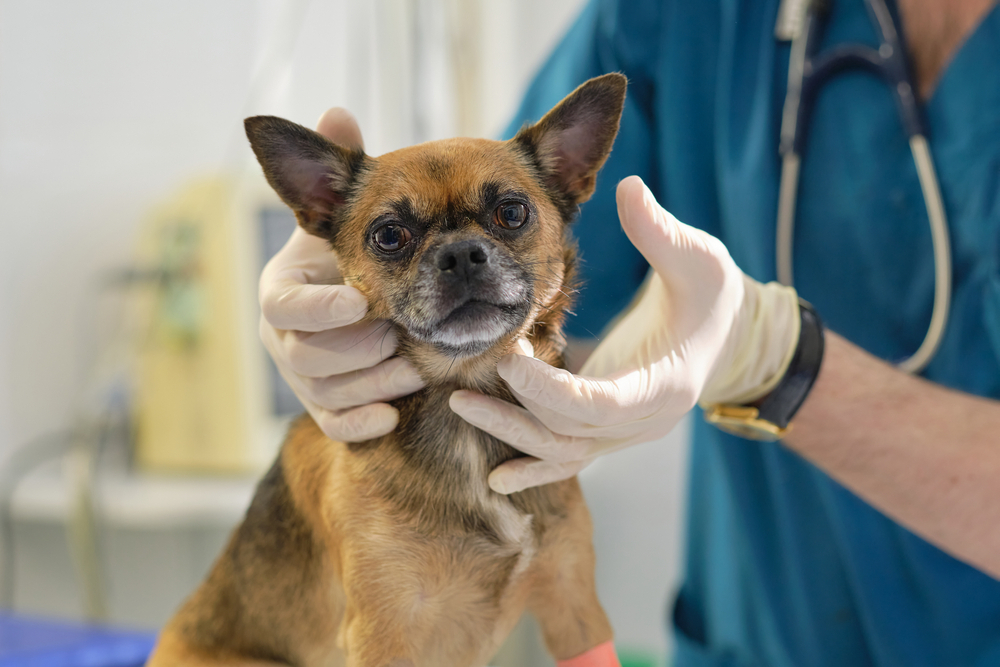
5. Forecasters expect the United States cat litter market to increase to $1.42 billion annually by 2025.
(Statista)
This increase isn’t surprising, given that more pet owners keep cats indoors these days. That necessitates a box and litter for them to do their business, and while it adds to your costs, you have the peace of mind that your kitty is much safer in your home than wandering around outside. After all, felines typically live longer when they stay indoors.
(Statista)
Insurance premiums vary depending on where you live and the availability of services. The cat’s breed also plays a role since some have more health issues than others. You’ll find options for accident-only, comprehensive health, and add-ons for wellness plans. Remember that one emergency visit will more than cover the cost, so it’s a worthwhile investment.

7. The two most affordable dog breeds to insure are the German Shepherd Dog and Beagle, averaging a monthly cost of $34 for accident and illness coverage.
(Statista)
Breed is a critical factor that influences the cost of pet insurance. The breed’s prevalence of hereditary and congenital conditions is another variable. After all, pet insurance isn’t a one-size-fits-all offering. Your location is another parameter affecting your premium. It’s worth noting that insurers have specific policies regarding coverage, which you should research. However, if you’re trying to keep costs low and you’ve just started your search for a pet, definitely take their breed into consideration.
8. Americans spent $28.8 billion at brick-and-mortar pet stores.
(IBIS World)
Many Americans have turned to online retail for their shopping needs, and the pet industry is no exception. However, many people like to handle products before they buy them, and they also appreciate the advice they can get from sales staff, as they can keep you informed about new items. Surprisingly, this figure has seen an estimated 2.4% annual increase between 2019 and 2024.
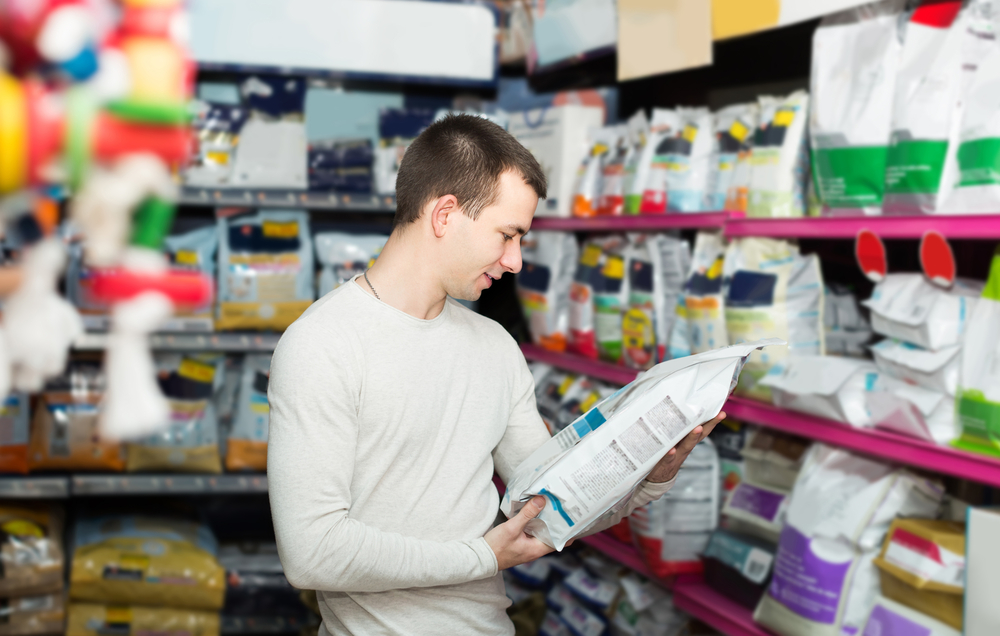
Inflation for Pet Products and Services
9. March 2024 pet food expenses averaged 23% higher than 2021 figures and almost 25% more than 2019.
(Pet Food Industry)
This figure isn’t surprising, given the state of the economy. Nevertheless, it still hurts the pocketbook, especially if it forces pet owners to make unpleasant choices. Fortunately, there are many ways to save money, such as signing up for subscriptions to autofill your orders, as many sellers offer a decent discount to secure a regular sale.
10. An unexpected pet health expense of $250 or less causes about 25% of owners to experience anxiety.
(Synchrony)
Unexpected pet expenses are often the result of an emergency. Dogs are notorious for eating things they shouldn’t, and cats usually hide signs of an illness or injury because it makes them vulnerable, meaning any pet parent could find themselves paying for something they didn’t account for, and in today’s economy, it makes sense that that would trigger a bit of anxiety.

11. The average cost for an emergency vet exam is between $100 to $200.
(Preventive Vet)
Another riff on Murphy’s Law states that an emergency will happen at night, on the weekend, or on a holiday when your vet isn’t available. That pushes you to off-hour clinics. It’s great that they’re around, even if it costs more. Consider the fact that these prices make a solid case for investigating pet insurance for your animal companion, as most insurers reimburse these expenses.
12. Veterinary costs have surged 39% higher in March 2024 compared to numbers from March 2019.
(Pet Food Industry)
Unsurprisingly, all veterinary costs have increased. Transportation, supply chain issues, and materials have all affected the prices you pay. Again, that makes insurance an excellent choice for planning for the unexpected and expected costs of pet care.

13. The most expensive state for a routine vet exam is Connecticut, with the cost averaging $93.
(Care Credit)
Many variables affect the cost of a routine vet exam. Your location is a critical factor, but it also hinges on the number of pets, the number of vets, and the local costs of doing business. Regional issues, such as the prevalence of health conditions such as heartworm disease or Lyme disease, may also play a role. The cost of living can also influence what you pay. So, if you’re living in Connecticut, expect the prices you pay to be higher compared to the rest of the country.
14. Winston-Salem, NC is the most expensive place to own a dog, with average annual costs for doggie daycare running $2,784.
(Forbes Advisor)
Winston-Salem, NC, has the dubious distinction of topping this stat. Doggie daycare is expensive, but veterinary care and boarding are also pricey. Sadly, residents often have to contribute a greater percentage of their household income to cover the costs.
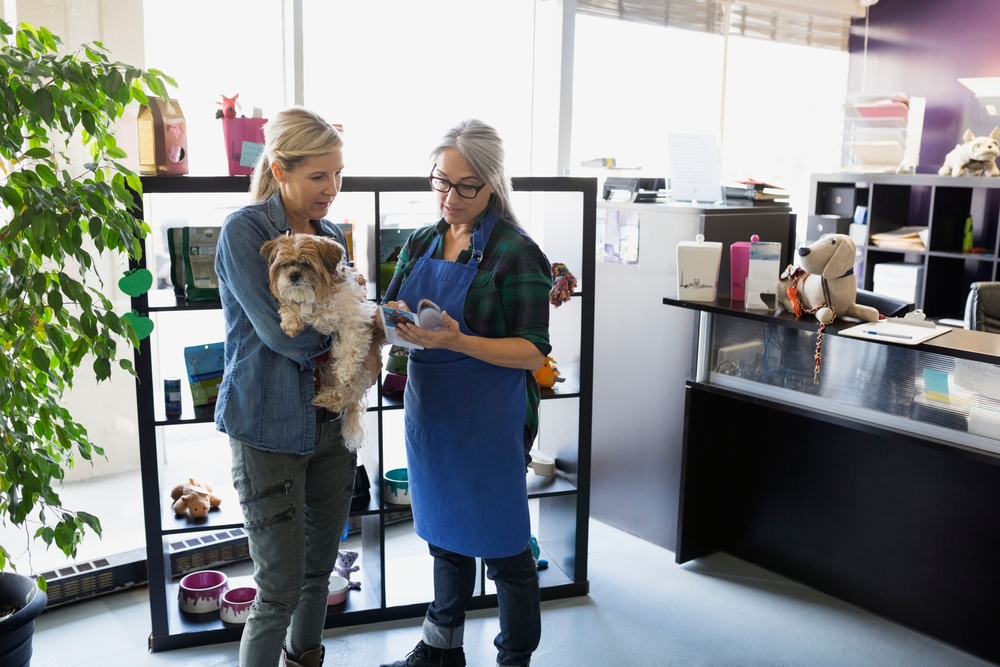
Miscellaneous Pet Spending
15. Pet owners spent an estimated $122 on their animal companions during the 2023 holiday season.
(Market Watch)
We have to wonder what pet owners are buying to tally up to $122 for the holidays. Regardless, their animal companions are the beneficiaries of their generosity. It’s evident the holiday spirit is alive and well when it comes to taking care of all family members, including the pets.
16. About 74% planned to buy toys for their pets during the holidays.
(Market Watch)
Toys are the number one holiday gift, followed by treats, miscellaneous supplies, and clothing. However, toys are a definite favorite amongst our pets.
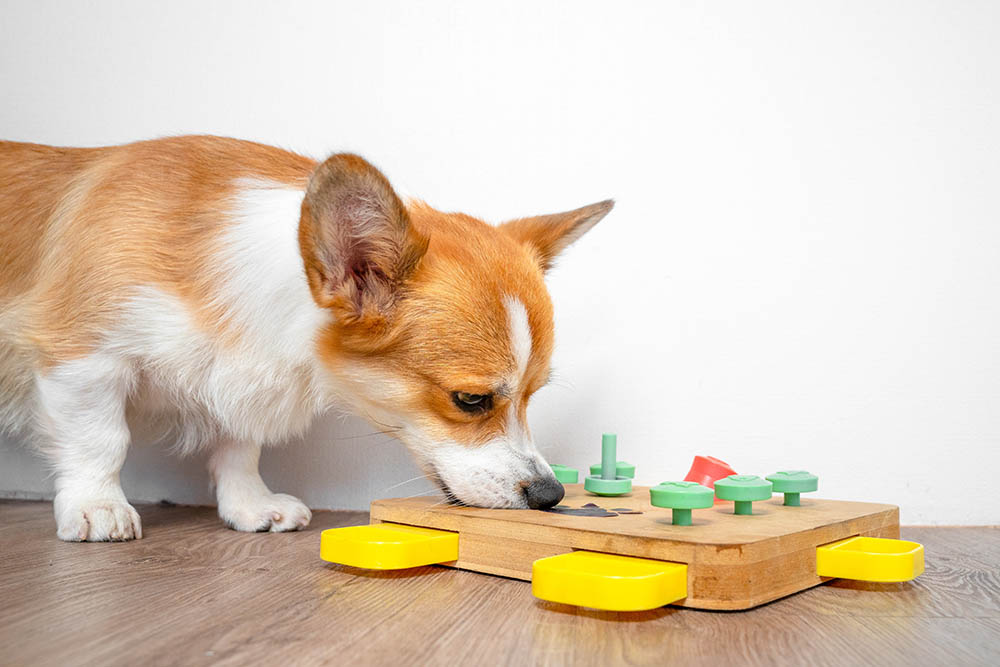
17. Generation Z spent the greatest percentage of their holiday gift budget on pets, at about 35%.
(Market Watch)
Gen Z may not have as many children compared to other generations, which explains why they may lavish their pets with gifts during the holidays. After all, they have to spend their discretionary income on something! Why shouldn’t it be their pets?
18. Baby Boomers spend the greatest percentage of their income on pets, averaging 0.96%.
(Market Watch)
This statistic may be surprising since many Boomers are approaching retirement age and have fixed incomes. Perhaps that accounts for the relatively high percentage compared to other age groups. Another factor might be the greater proportion of empty nesters seeking the companionship that pets offer. Remember that animal companions cost a lot less than kids!
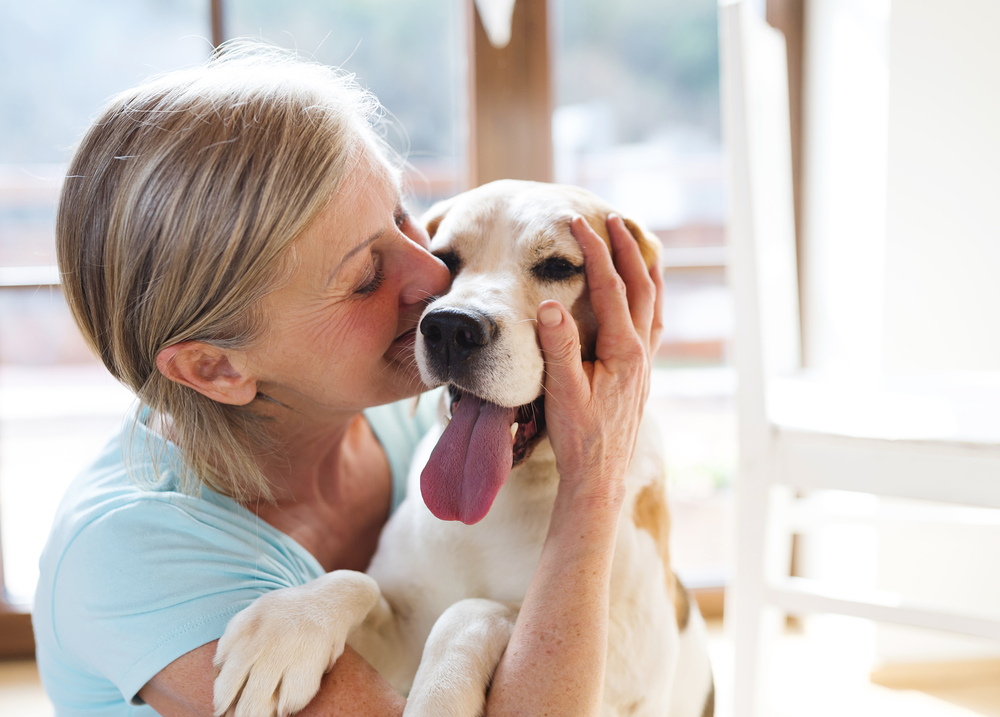
19. Midwest pet owners spent the most on their pets in 2022, averaging $820 annually.
(Market Watch)
This figure isn’t surprising if you consider the extra gear a pet owner may need for their animal companions. Upper Midwesterners embrace winter, and that means warm clothing and boots for their dogs, depending on the breed. The market share is undoubtedly higher for life vests and jackets in the Land of 10,000 Lakes, where canines are often boating companions.
20. Americans spent roughly $58.1 billion on pet food and treats in 2022.
(Statista)
This figure includes online and brick-and-mortar stores. Nonetheless, it’s an impressive and compelling statement about how we view our pets. We love to spoil our animal companions, and money is no object.
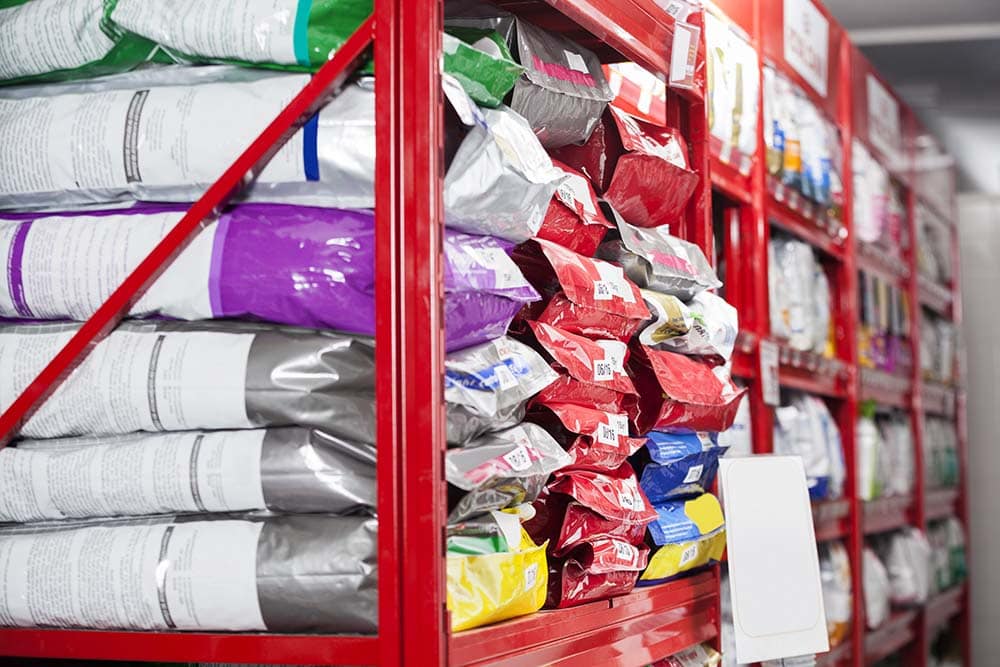

Frequently Asked Questions (FAQ)
What State Spoils Their Pets the Most?
(Forbes Advisor)
Florida captures the top honors for the most spoiled dogs. We’re talking about 66.5% of pet owners who spend more on their animal companions’ grooming than their own. They even put them in strollers like babies and dress them up for fun!
What Is the Biggest Gripe of Pet Owners?
(Forbes Advisor)
Pet owners are more likely to travel with their pets. However, the hotel industry has yet to catch up with this trend, with only 5% being pet friendly. It’s a missed opportunity since they are willing to pay for their animal companions to tag along.
What Are the Most Popular Pets After Dogs and Cats?
(American Pet Products Association)
Our article focused heavily on dogs and cats. However, they are not the only animals people spend money on for companionship of varying degrees. Freshwater fish are a distant third, with 11.1 million households having them as pets.

Conclusion
We love our pets, and it is evident when you look at our spending habits and the things we buy our animal companions. They give us so much joy that we don’t think twice about opening our wallets. It is not just for holidays, either. We want the best for the animals we consider members of our families, and there’s precious little that we can do to repay them for their unconditional love.
